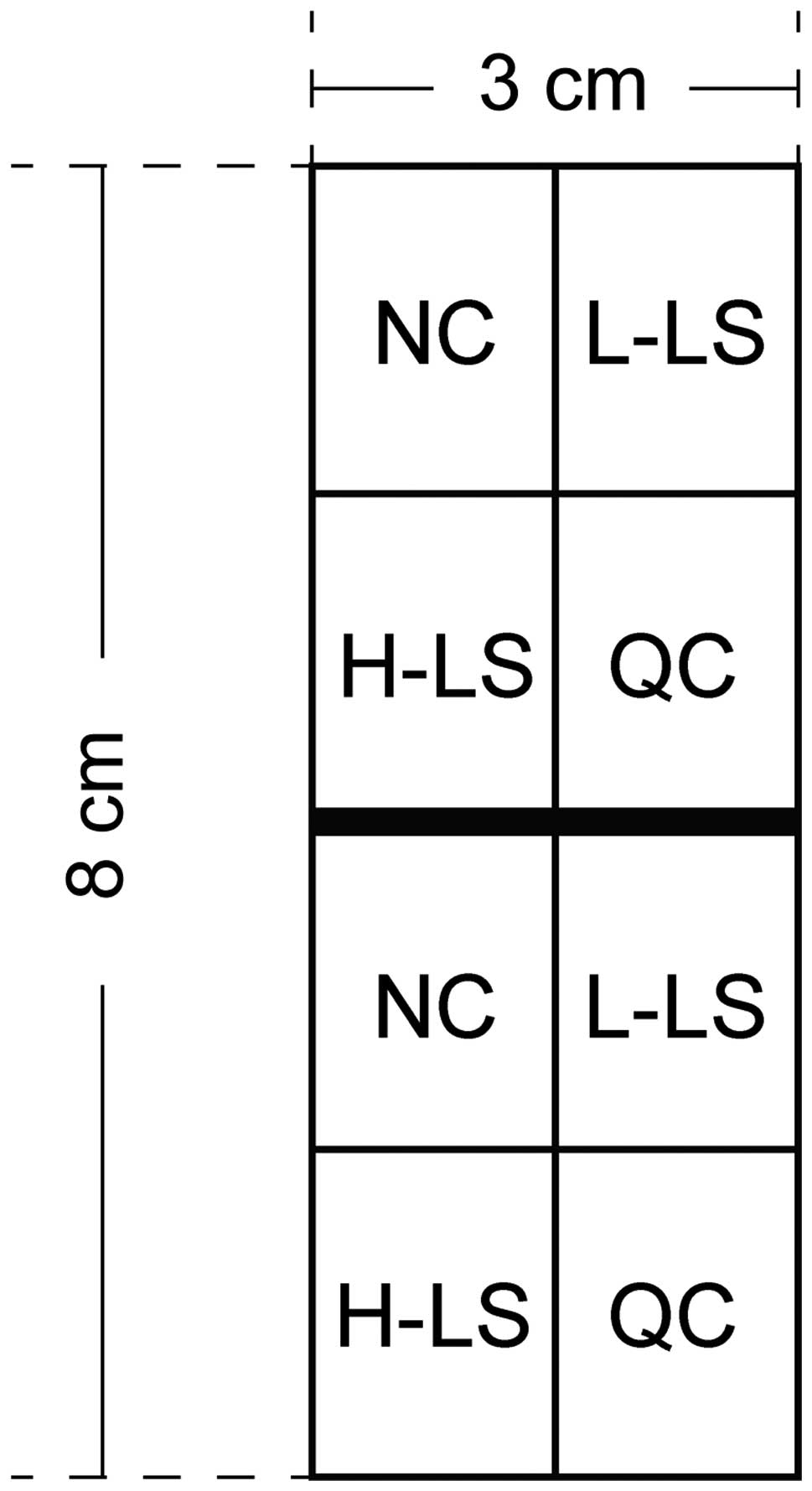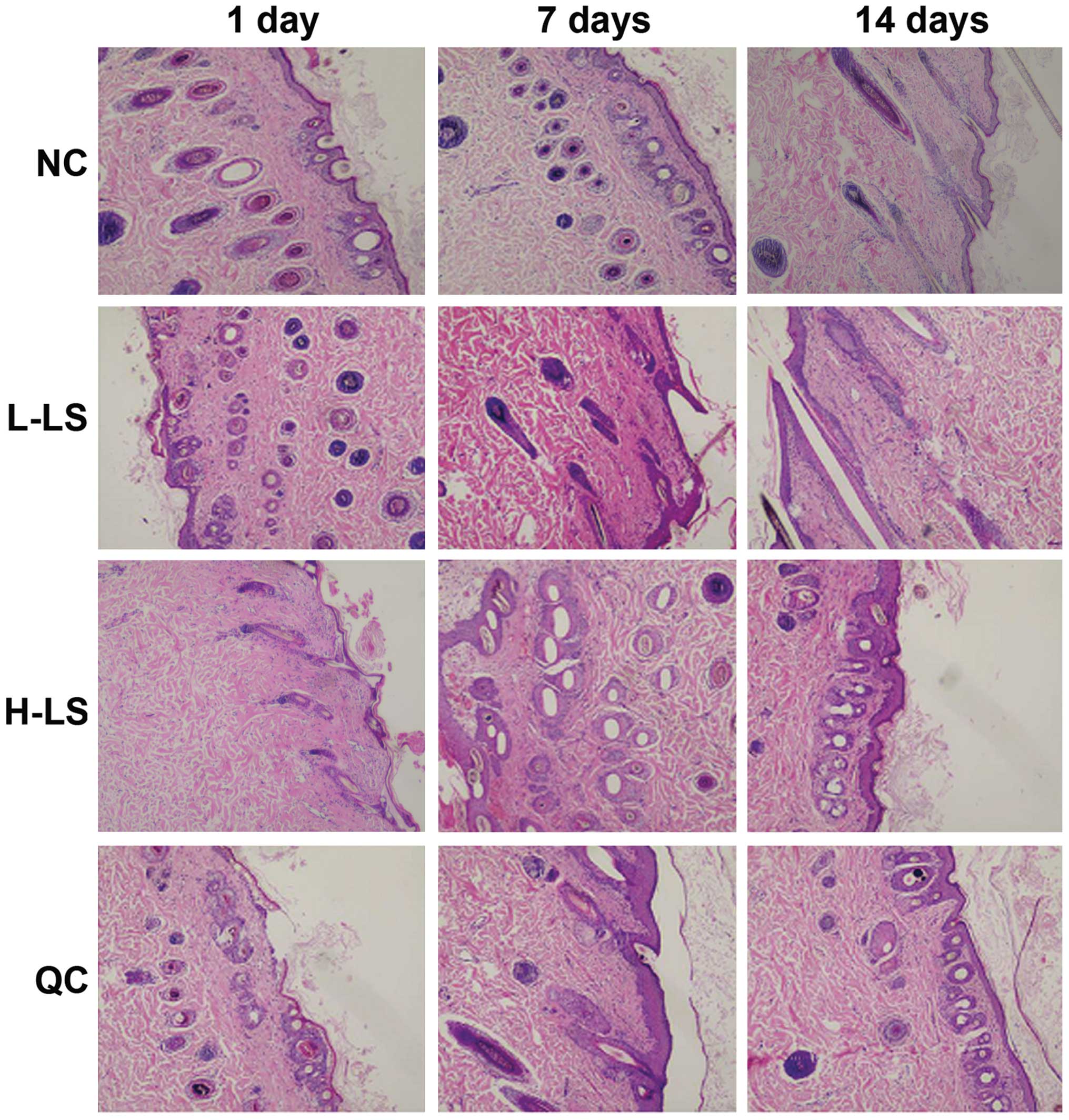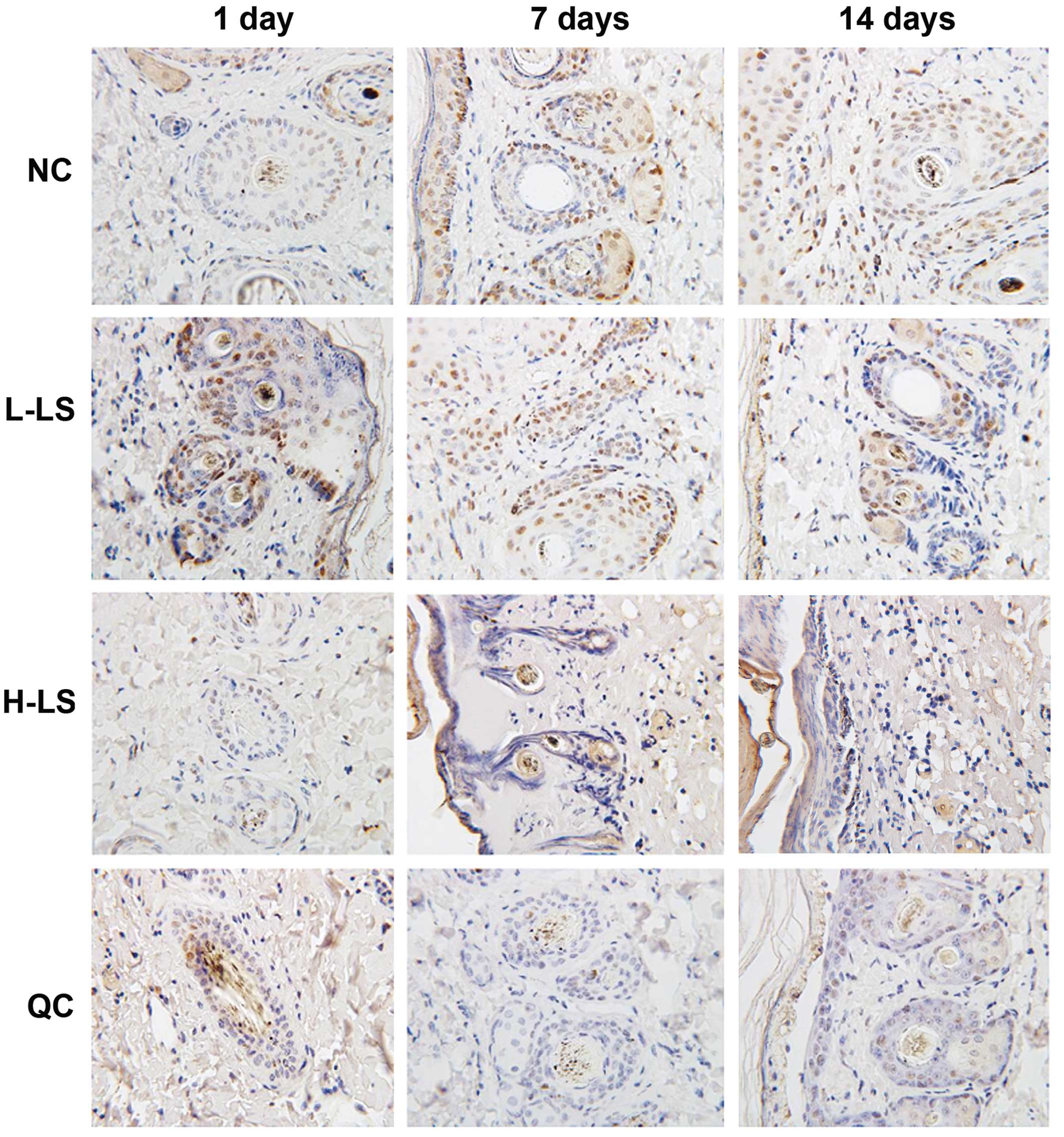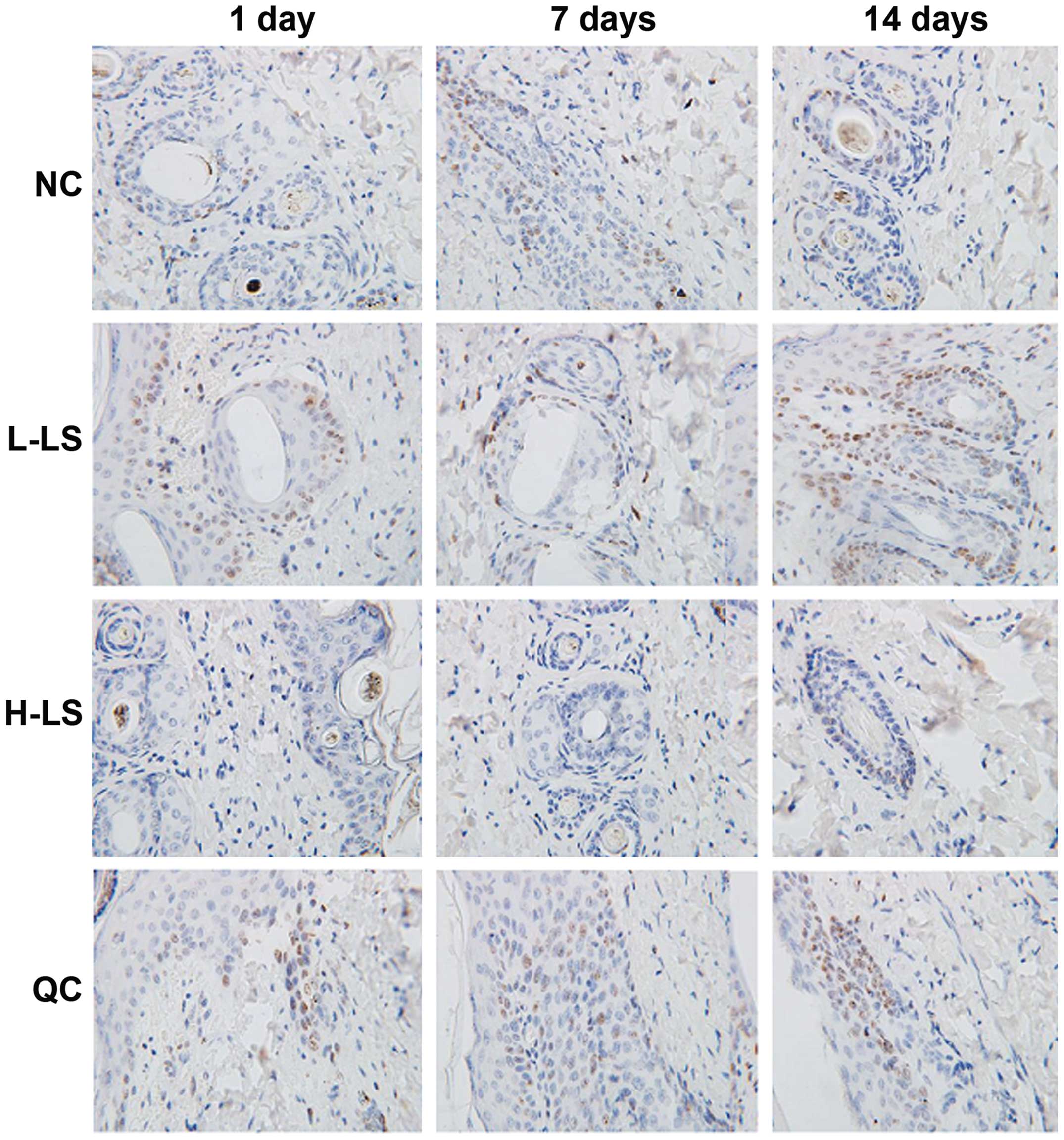|
1
|
Ashique KT and Srinivas CR: Pen punching:
an innovative technique for comedone extraction from the well of
the concha. J Am Acad Dermatol. 73:e1772015. View Article : Google Scholar : PubMed/NCBI
|
|
2
|
Handler MZ, Bloom BS and Goldberg DJ:
Energy-based devices in treatment of acne vulgaris. Dermatol Surg.
42:573–585. 2016. View Article : Google Scholar : PubMed/NCBI
|
|
3
|
Keyal U, Bhatta AK and Wang XL:
Photodynamic therapy for the treatment of different severity of
acne: a systematic review. Photodiagn Photodyn Ther. 14:191–199.
2016. View Article : Google Scholar
|
|
4
|
Demirci GT, Mansur AT and Gulec AT:
Comedones induced by vascular laser therapy. J Cutan Aesthet Surg.
9:38–40. 2016. View Article : Google Scholar : PubMed/NCBI
|
|
5
|
Lee SJ, Seok J, Jeong SY, Park KY, Li K
and Seo SJ: Facial pores: definition, causes, and treatment
options. Dermatol Surg. 42:277–285. 2016. View Article : Google Scholar : PubMed/NCBI
|
|
6
|
Levin MK, Ng E, Bae YS, Brauer JA and
Geronemus RG: Treatment of pigmentary disorders in patients with
skin of color with a novel 755 nm picosecond, Q-switched ruby, and
Q-switched Nd:YAG nanosecond lasers: a retrospective photographic
review. Lasers Surg Med. 48:181–187. 2016. View Article : Google Scholar : PubMed/NCBI
|
|
7
|
Lapchak PA, Boitano PD, Butte PV, Fisher
DJ, Hölscher T, Ley EJ, Nuño M, Voie AH and Rajput PS: Transcranial
near-infrared laser transmission (NILT) profiles (800 nm):
systematic comparison in four common research species. PLoS One.
10:e01275802015. View Article : Google Scholar : PubMed/NCBI
|
|
8
|
Lekakh O, Mahoney AM, Novice K, Kamalpour
J, Sadeghian A, Mondo D, Kalnicky C, Guo R, Peterson A and Tung R:
Treatment of acne vulgaris with salicylic acid chemical peel and
pulsed dye laser: a split face, rater-blinded, randomized
controlled trial. J Lasers Med Sci. 6:167–170. 2015. View Article : Google Scholar : PubMed/NCBI
|
|
9
|
Morton LM: The evolution of laser surgery
for acne and other scarring processes. Semin Cutan Med Surg.
33:169–175. 2014. View Article : Google Scholar : PubMed/NCBI
|
|
10
|
Been MJ and Mangat DS: Laser and face peel
procedures in non-Caucasians. Facial Plast Surg Clin North Am.
22:447–452. 2014. View Article : Google Scholar : PubMed/NCBI
|
|
11
|
Avci P, Gupta A, Sadasivam M, Vecchio D,
Pam Z, Pam N and Hamblin MR: Low-level laser (light) therapy (LLLT)
in skin: stimulating, healing, restoring. Semin Cutan Med Surg.
32:41–52. 2013.PubMed/NCBI
|
|
12
|
da Silva Neto Trajano L Alexsandra, da
Silva CL, de Carvalho SN, Cortez E, Mencalha AL, de Souza da
Fonseca A and Stumbo AC: Cell viability, reactive oxygen species,
apoptosis, and necrosis in myoblast cultures exposed to low-level
infrared laser. Lasers Med Sci. 31:841–848. 2016. View Article : Google Scholar : PubMed/NCBI
|
|
13
|
Khalil MI, Ibrahim MM, El-Gaaly GA and
Sultan AS: Trigonella foenum (fenugreek) induced apoptosis in
hepatocellular carcinoma cell line, HepG2, mediated by upregulation
of p53 and proliferating cell nuclear antigen. Biomed Res Int.
2015.914645PubMed/NCBI
|
|
14
|
Melo RM, Martins YS, Luz RK, Rizzo E and
Bazzoli N: PCNA and apoptosis during post-spawning ovarian
remodeling in the teleost Oreochromis niloticus. Tissue Cell.
47:541–549. 2015. View Article : Google Scholar : PubMed/NCBI
|
|
15
|
Li DW, Li GR, Zhang BL, Feng JJ and Zhao
H: Damage to dopaminergic neurons is mediated by proliferating cell
nuclear antigen through the p53 pathway under conditions of
oxidative stress in a cell model of Parkinson's disease. Int J Mol
Med. 37:429–435. 2016.PubMed/NCBI
|
|
16
|
Lossi L, Cocito C, Alasia S and Merighi A:
Ex vivo imaging of active caspase 3 by a FRET-based molecular probe
demonstrates the cellular dynamics and localization of the protease
in cerebellar granule cells and its regulation by the
apoptosis-inhibiting protein survivin. Mol Neurodegener. 11:342016.
View Article : Google Scholar : PubMed/NCBI
|
|
17
|
Duan P, Hu C, Butler HJ, Quan C, Chen W,
Huang W, Tang S, Zhou W, Yuan M, Shi Y, et al: 4-Nonylphenol
induces disruption of spermatogenesis associated with oxidative
stress-related apoptosis by targeting p53-Bcl-2/Bax-Fas/FasL
signaling. Environ Toxicol. 18:14–15. 2016.
|
|
18
|
Tsai WC, Cheng JW, Chen JL, Chen CY, Chang
HN, Liao YH, Lin MS and Pang JH: Low-level laser irradiation
stimulates tenocyte proliferation in association with increased NO
synthesis and upregulation of PCNA and cyclins. Lasers Med Sci.
29:1377–1384. 2014. View Article : Google Scholar : PubMed/NCBI
|
|
19
|
Mun S, Cheon M, Kim SH, Choi N, Kim S, Yoo
Y and Lim S: The effect of laser diode irradiation on wound healing
of rat skin. J Cosmet Laser Ther. 15:318–325. 2013. View Article : Google Scholar : PubMed/NCBI
|



















